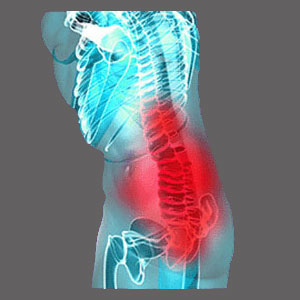
Spinal cord impingement describes constriction of the spinal cord by some structure within the central vertebral canal. The degree of canal narrowing and cord contact is highly variable, depending on many factors, and the diagnosis of impingement is never crystal clear in its prognosis for this reason. Impingement can describe conditions ranging from cord contact to mass effect to displacement to compression. Each of these conditions is likely to present very differently. Diagnostic terminologies are not exactly standardized in the dorsalgia medical sector. There is much subjectivity to some diagnoses, which is why we spend such a significant amount of time analyzing and interpreting various diagnostic names for the benefit of our readership.
This essay takes a close look at impingement as a diagnostic term used to describe interactions between stenotic formations and the spinal cord. We will also explain why impingement is not the best diagnostic verdict for care providers to use, due to its extreme subjectivity of interpretation.
Range of Spinal Cord Impingement
Impingement means that the spinal cord is experiencing some degree of interference with its normal form and/or functionality. This is what makes the diagnostic term impingement such a poor choice. Some cases of impingement are complete nonissues, while others might be justifiable grounds for emergency surgery.
On the low end of the clinical severity scale, impingement might describe conditions where the spinal cord is being crowded or effaced by some stenotic process. However, no compression of functional impairment is suffered. Moving up the level of clinical significance, impingement might describe a mass effect or displacement of the spinal cord, which will definitely change the form of the cord, but not necessarily the functionality. Adequate space remains surrounding the cord to ensure neurological viability. Finally, impingement might also describe compression of the spinal cord, which is always a pathological diagnosis that often requires dramatic interventions to resolve.
Spinal Cord Compression Alternative Diagnoses
It would be much better and more objective if care providers would simply universally utilize the diagnostic terms outlined above instead of utilizing the name impingement. Contact or effacement accurately describes stenosis touching the cord without changing its appearance of functionality. Mass effect or displacement describes change to the shape or placement of the spinal cord, without necessarily changing its functionality. Spinal cord compression describes restriction of neurological functionality and represents the most serious form of impingement on the cord structure.
Universally implementing these other diagnostic terminologies would make each diagnosis and prognosis much clearer to the patient and help them to make more informed and appropriate choices when it comes to the path of their treatment. However, since some care providers actually purposefully utilize subjective diagnostic terms in an effort to get patients to immediately comply with treatment recommendations, this occurrence is unlikely to ever come to fruition.
Spinal Cord Impingement Decisions
Cord contact and effacement conditions are very, very common as people age and demonstrate the normal degrees of spinal stenosis seen in the cervical vertebral canal. It is quite typical that in areas of notable stenosis, especially in regions where the spinal canal is curving, cord contact might occur, but is usually nothing to be concerned about. Treatment is never needed, but is often rendered regardless.
Spinal cord displacement and mass effect are common results of significant herniated discs and some other stenosis processes in the cervical spine. While these conditions do not present any medical emergency, they should be monitored to ensure future functionality of the cord is preserved and that the condition does not progress to involve cord compression. Active treatment is virtually never needed, but is very commonly provided.
Spinal cord compression denotes a scenario wherein the cord is already suffering functional loss and the existence of symptomatic activity is almost universal. Treatment is almost universally justified and often involves surgical intervention to decompress the spinal cord and increase the effective size of the affected region of the spinal canal.
Spinal Stenosis > What is Spinal Stenosis? > Spinal Cord Impingement





